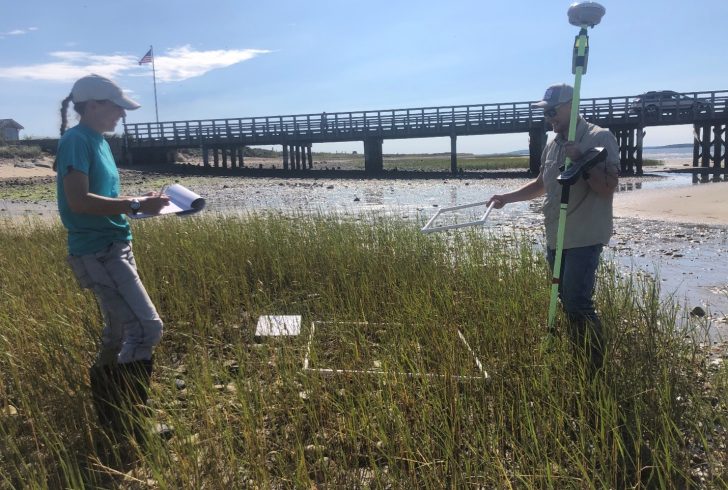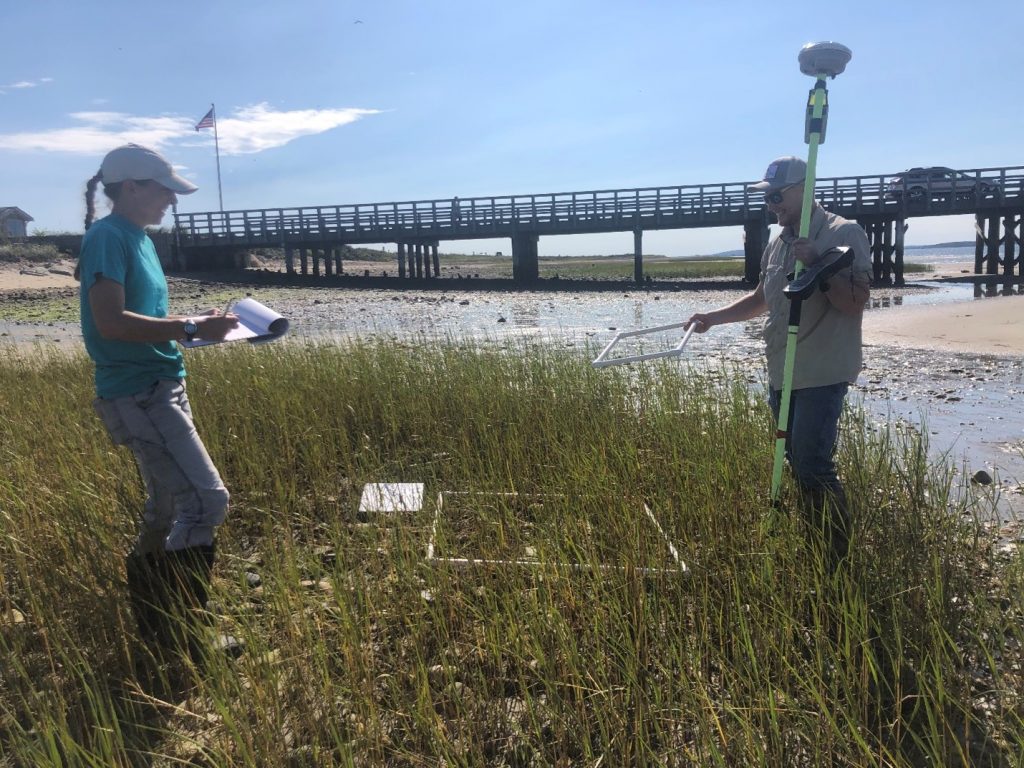The Duxbury Beach Reservation Creates Nature-Based Approaches to Address Erosion


Powder Point Bridge in Duxbury, MA first opened in 1892. This 2,200-foot wooden bridge – which once held the record as the longest wooden bridge in the country—is a cultural landmark for the Town and provides public access to a popular barrier beach. Like most barrier beaches, however, this one moves. Water and wind cause the beach to shift on both the ocean and bay sides. Erosion now threatens the ends (abutments) of this historic bridge, and Duxbury is taking action to protect it.

Working with the Woods Hole Group (a partner of the Stone Living Lab), the Duxbury Beach Reservation is moving forward with plans to create a nature-based approach consisting of a cobble berm, dune restoration, and abutment protection. Placing cobbles (small to medium rocks and stones) of similar sizes and shapes as those already at the location will help reduce wave energy and erosion without the need for a seawall or other hardened structure. This strategy has been used at other locations, but important research questions remain about how effective cobble berms are at reducing erosion, how they should be designed, and what—if any–impacts they have on natural resources. This is where the Stone Living Lab comes in….

Researchers from the Lab, led by Woods Hole Group, are documenting and analyzing the site before the cobble berm is constructed to gather baseline conditions. The scientists are looking to see what types of plants and animals are currently in the area and in what numbers, as well as the shape and condition of the beach and dune. They’re also looking at some sites further away that can be used as control sites to determine if changes they see are a result of the cobble berm or some other unrelated cause.

Over the next few years, the researchers will revisit the site and gather the same types of data at the same locations. They will compare the data to see if the bridge is having any impact on erosion and/or natural resources. Observations from the Powder Point Bridge project, combined with data from other sites with similar monitoring, will help decision-makers design better cobble berms in the future.